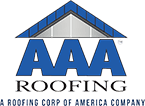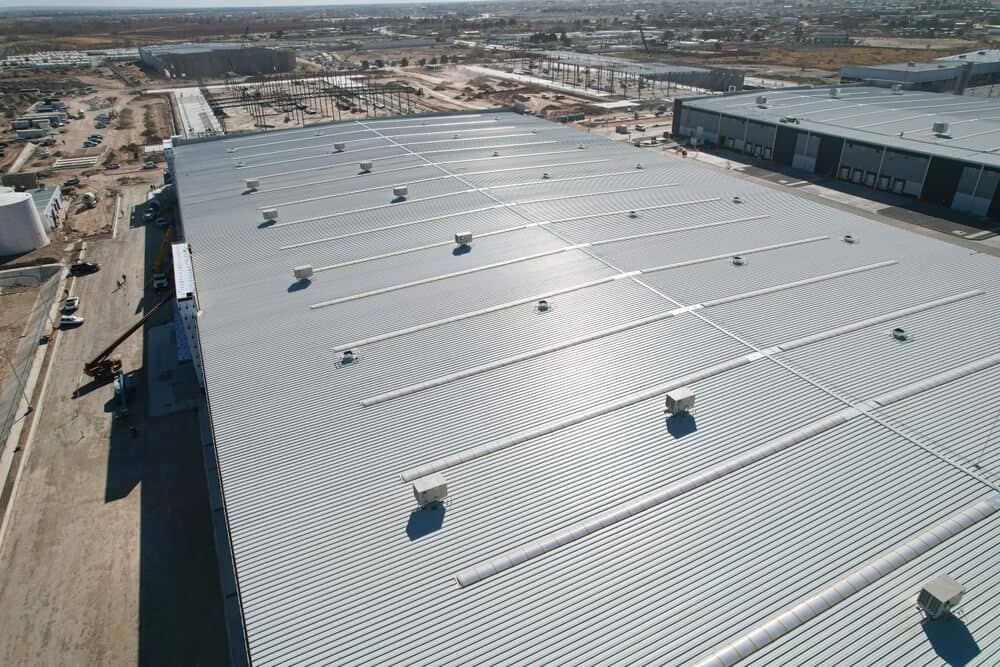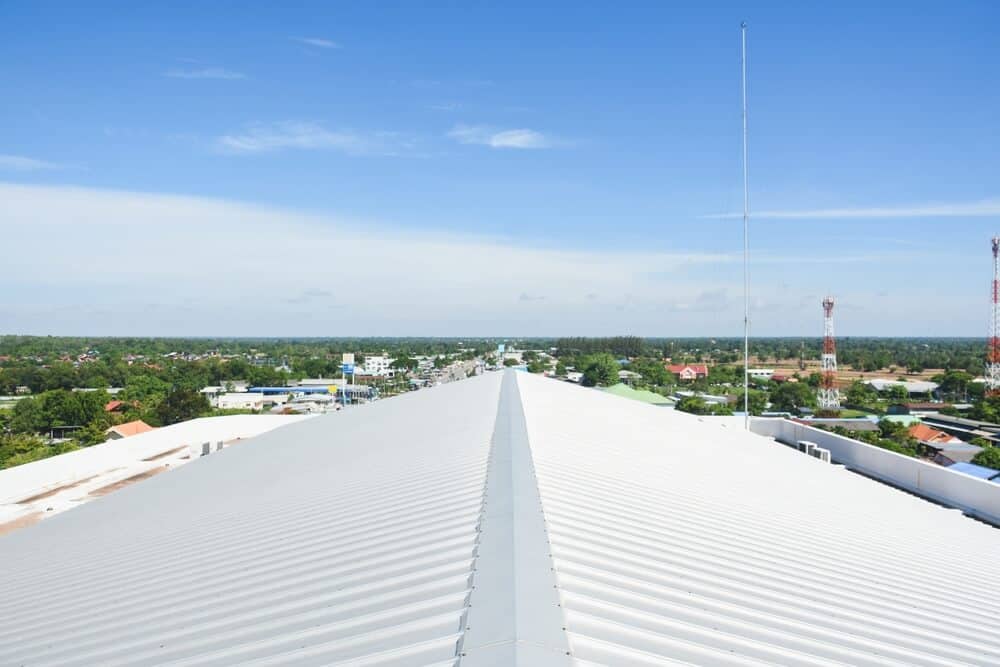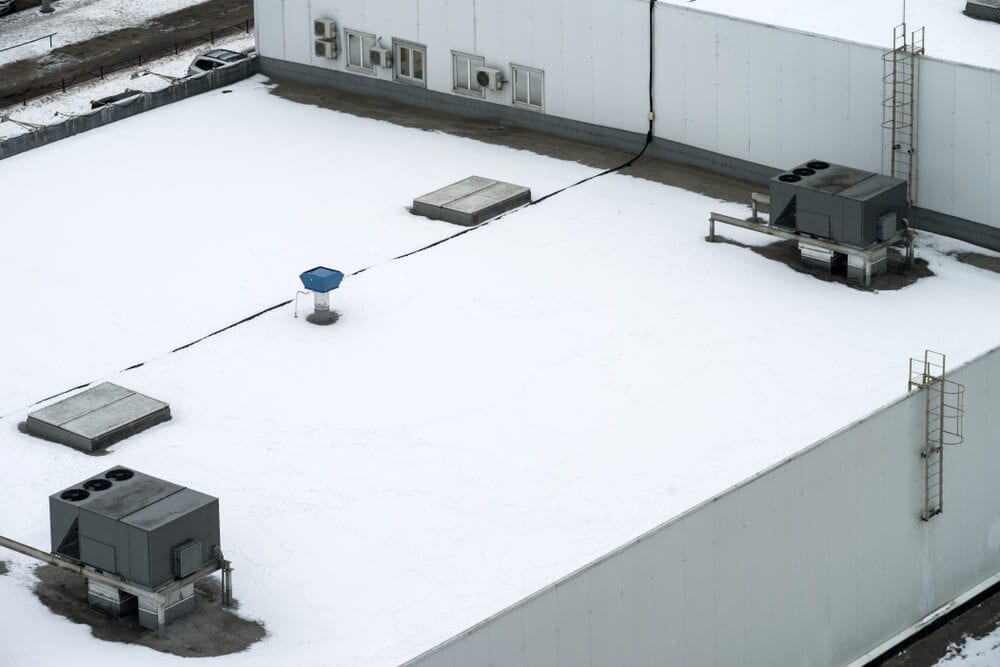If you are involved in commercial construction in California, you already know there’s much to consider regarding California roofing codes. They are, in fact, some of the strictest green building codes in the U.S. In addition, the California Energy Commission updates Part 6 of Title 24 every three years.
You’ll find these codes in the Title 24 California Building Code. You can find the information about roofing in Chapter 15.
Let’s look broadly at California’s roofing codes for commercial buildings to help you be informed. But first, it’s important to understand what qualifies as a “commercial building” in California.
Contents
- 1 Definition of a Commercial Building in California
- 2 Commercial Roof Requirements
- 2.1 Design and installation of secondary roof drainage systems
- 2.2 Design and installation of roof coverings
- 2.3 Performance requirements for each type of roof system
- 2.4 Fire classification for roof assemblies
- 2.5 Application of roof covering materials
- 2.6 Application of roof systems
- 2.7 Protective coating material standards
- 2.8 Standards for roof insulations
- 2.9 Requirements for rooftop structures
- 2.10 Reroofing requirements
- 2.11 Permits and Licenses for Roofing Contractors
- 3 Key Takeaways
Definition of a Commercial Building in California
According to California code, a commercial building is any property that is not a single-family home, multi-family dwelling, or mobile home. If you are wondering if the California roofing codes for commercial buildings apply to your structure – they probably do.
Commercial Roof Requirements
Of course, this blog aims to give you a broad overview of the information you’ll find about roofing in Title 24. For information regarding your building’s specific requirements, work with an experienced commercial roofing contractor operating in California.
Design and installation of secondary roof drainage systems
You’ll find information about emergency drains, scuppers, and gutters – including stipulations around acceptable materials, considerations for preventing ponding water from becoming too deep, and guidelines for avoiding water build-up in primary drains.
Design and installation of roof coverings
Chapter 15 of Title 24 will stipulate the weatherproofing elements of the roof covering, including where flashing should be placed. You’ll also find information about corrosion-resistant metal flashing, guidance on intake/exhaust ventilation for attics, coping dimensions, and crickets and saddles for chimneys and other roof penetrations.
Performance requirements for each type of roof system
Title 24 sets performance standards for each type of commercial roofing system. You’ll find requirements for wind resistance standards, impact resistance, and considerations for roofs in hurricane-prone areas.
Fire classification for roof assemblies
Roof assemblies are categorized for fire resistance as Class A, B, or C, –according to how long they retain integrity against fire. This section specifies minimum fire resistance requirements for roofing systems in zones categorized by level of fire risk.
Application of roof covering materials
The code has a section detailing the requirements for applying roof covering materials, including their physical makeup, packaging requirements, and installation instructions.
Application of roof systems
An extensive section defines the standards required for all roof coverings (including underlayments, roofing materials, fasteners, etc.) and how they should be attached.
Protective coating material standards
California roofing code includes material standards for acrylic, silicone, and polyurethane coatings. You’ll also find information about liquid-applied roofing, vegetative roofing, solar panels, etc.
Standards for roof insulations
This section identifies the standard requirements for various types of above-deck thermal insulation materials, including composite boards, cellular glass boards, gypsum, extruded polystyrene, etc.
Requirements for rooftop structures
The code includes information regarding structures that might be built or mounted on commercial roofing systems, including cooling towers, domes, spires, water tanks, etc.
Reroofing requirements
You will find extensive instructions on acceptable materials and application methods for re-roof projects. This section addresses allowable structural loads, removal and replacement of old materials, roof recovering methods, etc.
Permits and Licenses for Roofing Contractors
The penalties for failing to comply with California roofing standards are brutal. That’s why you must work with an experienced roofing contractor in California.
Contact AAA Roofing, the leading commercial roofing contractor in Los Angeles, Riverside, San Jose, and throughout California. We specialize in new construction, existing building reroofs, tenant improvements, and commercial roof maintenance. Contact us today to schedule a consultation to ensure your new roof project complies with California code.
Key Takeaways
- California commercial roofing codes are some of the strictest in the country.
- There are codes for installing every part of the roof.
- Compliance with California building codes is NOT optional.
- It’s essential to work with an experienced roofing company operating in California.
